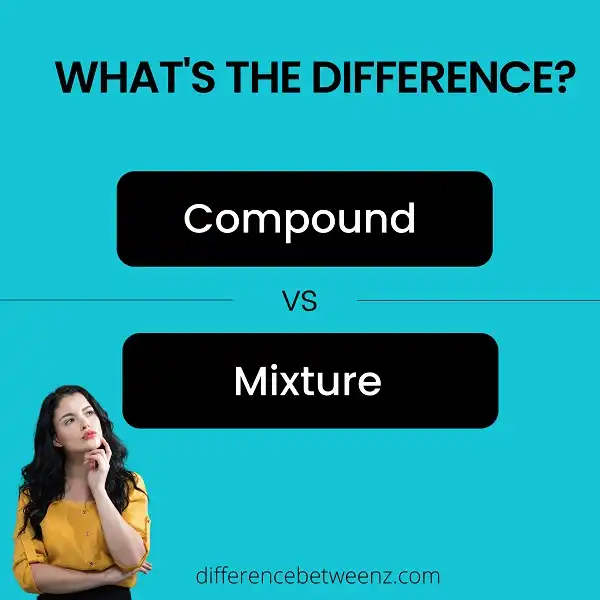There are many different types of substances, and two of the most common are compounds and mixtures. Compounds always have a specific ratio of elements, while mixtures can have any ratio. In this blog post, we will explore the difference between these two types of substances in more detail. We will also look at some examples to help you understand the difference. Stay tuned!
What is a Compound?
Compounds are substances that are made up of two or more elements that are chemically bonded together. The elements in a compound can be either atom of the same element (such as H2O) or atoms of different elements (such as NaCl). Compounds can be either ionic or covalent, depending on the type of bond that holds the atoms together.
Ionic compounds are held together by electrostatic forces, while covalent compounds are held together by polar covalent bonds. Compounds can be either solid, liquid, or gas at room temperature, depending on the types of atoms and bonds present. Compounds are an important part of chemistry and play a significant role in everyday life.
What is a Mixture?
- Mixtures are combinations of two or more substances that are physically combined. The individual substances in a mixture retain their own physical and chemical properties. Mixtures can be either heterogeneous or homogeneous. Heterogeneous mixtures are not evenly mixed and you can see the different parts of the mixture. An example of a heterogeneous mixture is a tossed salad.
- The ingredients are not evenly mixed and you can see the lettuce, tomatoes, carrots, etc. Homogeneous mixtures are evenly mixed and you cannot see the different parts of the mixture. An example of a homogeneous mixture is salt water. The salt is dissolved in the water and you cannot see the salt anymore.
- Mixtures can be separated into their component parts by physical means such as centrifugation, decanting, chromatography, and evaporation. Mixtures can also be separated by chemical means such as distillation and precipitation. Mixtures are all around us in everyday life!
Difference between Compound and Mixture
- Compounds and mixtures are both substances made up of multiple atoms, but they differ in their composition and properties. A compound is a substance composed of two or more different elements that are chemically bonded together. This means that the atoms in a compound are arranged in a specific, fixed ratio. For example, water is a compound made of two hydrogen atoms and one oxygen atom.
- In contrast, a mixture is a substance made up of two or more elements that are not chemically bonded together. This means that the atoms in a mixture can be freely combined in any ratio. For example, saltwater is a mixture of salt and water molecules. While both compounds and mixtures are made up of multiple atoms, their different compositions give them unique properties.
- Compounds are often more stable than mixtures, and their properties are usually more predictable. However, mixtures can be easily separated into their component parts, while compounds usually require chemical reactions to do so.
Conclusion
In short, a compound is made up of two or more elements, while a mixture is composed of two or more substances that are not chemically combined. Understanding the difference between compounds and mixtures can help you better identify and understand the ingredients in the products you use every day. Have you ever wondered what makes up your shampoo or laundry detergent? Next time you’re at the store, take a look at the ingredient list- chances are, one (or both) of these categories will be represented.


